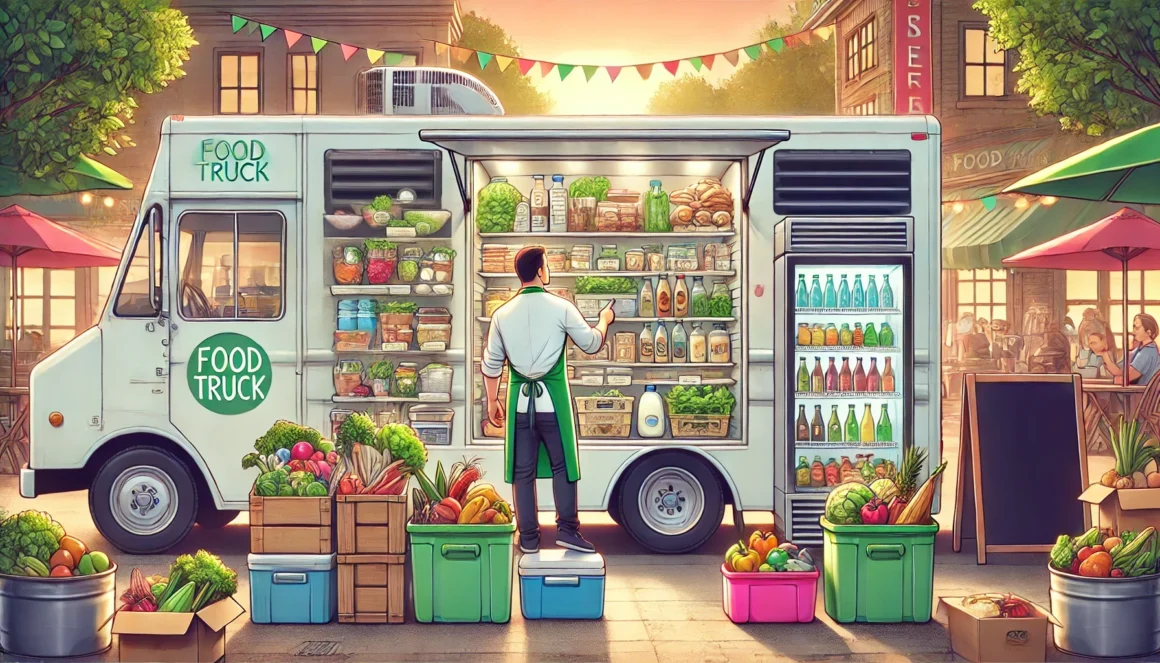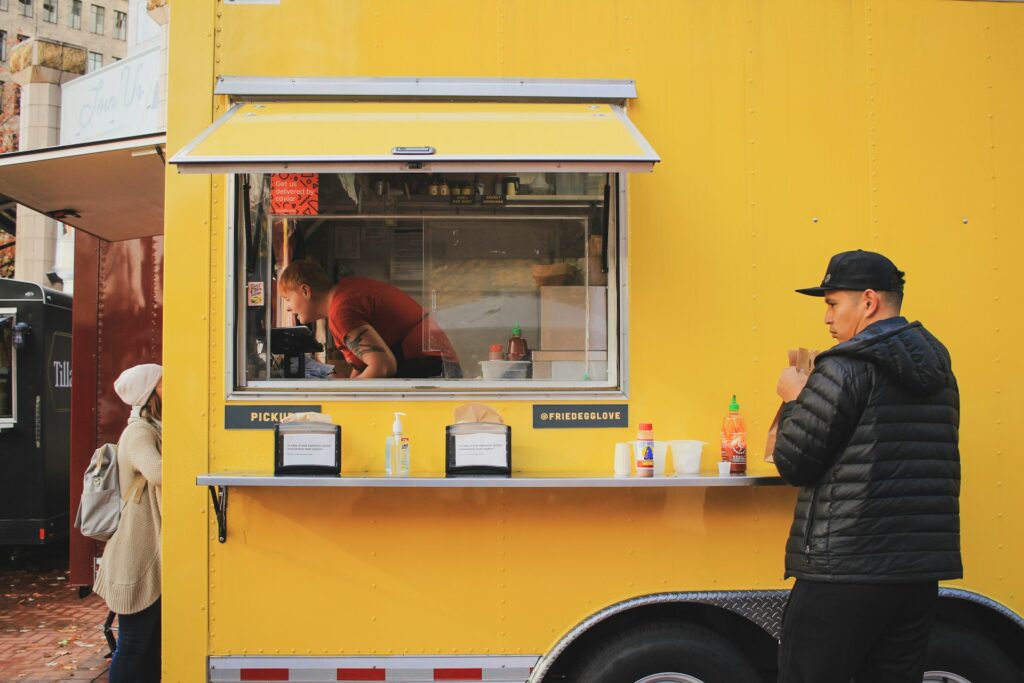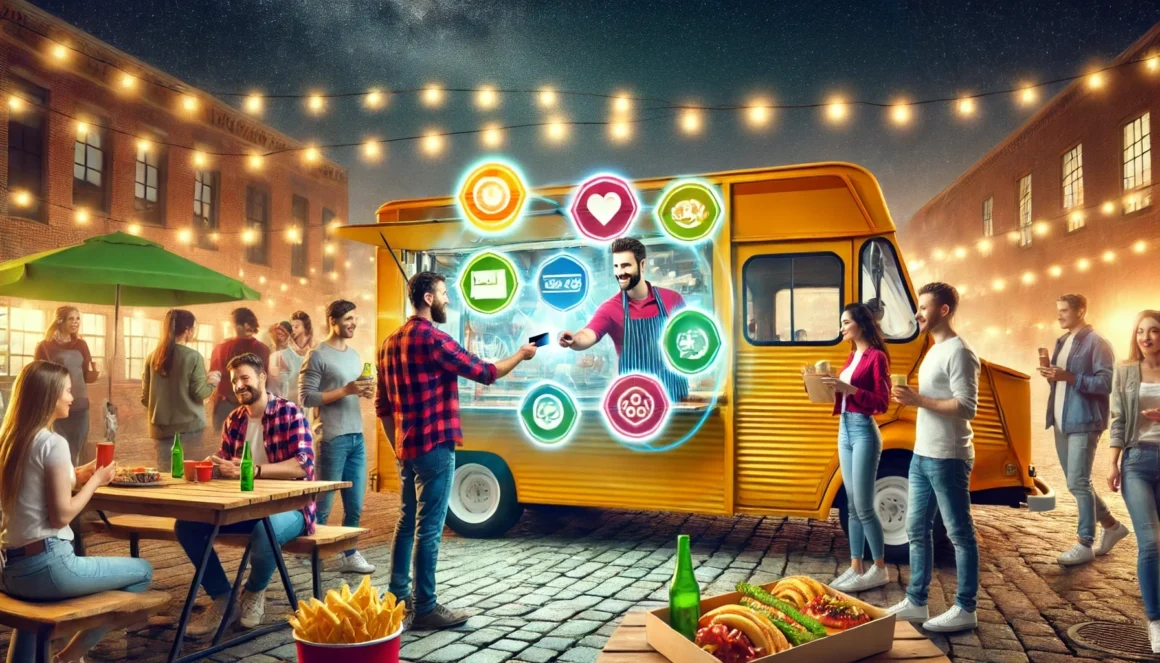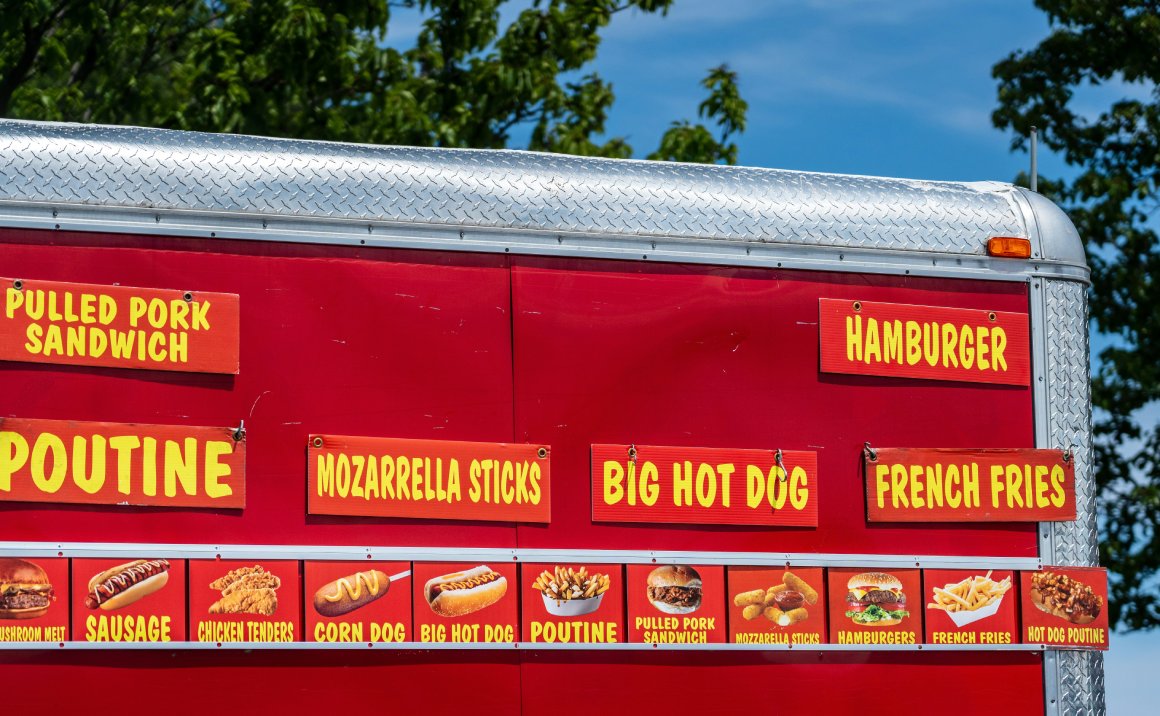
Food Truck Marketing 101: Expert Tips for Building Your Customer Base and Boosting Sales
This post is part of a regular series. Click here to start at the beginning.
As a food truck owner, you’ve already mastered your menu and the day-to-day operations of running your business. But marketing? That might be where things feel a bit overwhelming. Whether you’re new to marketing or just looking for new ways to promote your food truck, this guide will help you implement effective strategies to attract more customers, increase sales, and grow your business. The best part? You don’t need to be a marketing expert to see results—just follow these simple, actionable tips, and watch your food truck thrive.
We’ll cover key marketing strategies, examples of how to implement them, and, most importantly, how to measure the impact of these efforts on your bottom line.
1. Build a Strong Social Media Presence
Social media is one of the most powerful tools for food trucks, offering a free (or low-cost) way to engage with customers, promote your menu, and share your daily location. Even if you’re not a social media guru, a consistent presence on platforms like Instagram, Facebook, and TikTok can help you build a loyal following and attract new customers.
How to Implement This Tip:
- Post Regular Updates: Consistency is key on social media. Post at least once a day to keep your audience engaged. Share your location, new menu items, daily specials, or behind-the-scenes shots of your truck’s operations.
Example: A taco truck posts a photo of their daily special on Instagram with the caption, “Today’s special: Spicy Chicken Tacos! Find us on Main Street until 3 PM. #TacoTuesday #FoodTruckEats.” - Engage With Your Followers: Don’t just post and forget about it—engage with your audience. Respond to comments, answer questions, and encourage customers to share their experience at your truck by tagging your account.
Example: A smoothie truck replies to a customer’s comment asking about vegan options: “Yes, we have dairy-free smoothies! Stop by today for a free taste sample! 🌱” - Use High-Quality Photos and Videos: Social media is a visual platform, so make sure your posts are eye-catching. High-quality photos and short videos of your food, staff, or truck in action will grab attention and encourage customers to follow your page.
Example: A coffee truck posts a time-lapse video of their barista crafting a latte, showing the steam, foam art, and final product—all within 10 seconds. This video captures the excitement of visiting the truck and gets shared by several users.
Expected Results:
- Increased Engagement: By regularly posting and interacting with your audience, you’ll notice more likes, comments, and shares on your posts. These interactions increase your visibility, helping you reach a broader audience.
- Improved Customer Awareness: Customers will come to expect your daily updates, which means they’ll know where to find you and what’s on the menu.
- Measurable Growth: Track your follower count over time and watch for spikes in engagement after special announcements or promotions. Use analytics tools provided by platforms like Instagram and Facebook to measure your reach and interactions.
2. Develop a Loyalty Program
A loyalty program is a great way to keep customers coming back to your food truck. It’s a simple but effective strategy to reward repeat business while encouraging new customers to return. A well-designed loyalty program makes customers feel valued and builds a long-term relationship between your business and your audience.
How to Implement This Tip:
- Design a Simple Punch Card: Start with a basic punch card system, where customers earn a punch or stamp for every purchase. After a set number of purchases, they receive a reward—such as a free item or discount.
Example: A burger truck offers a punch card that gives customers a free side of fries after every five burger purchases. The truck hands out cards with each order and stamps them at checkout. - Offer Digital Loyalty Programs: For a more tech-savvy approach, use digital loyalty programs through apps or software. This allows customers to collect points through their smartphones and gives you the ability to track customer data.
Example: A crepe truck partners with a digital loyalty app that tracks customer purchases and automatically sends a coupon for a free crepe after the customer hits 10 purchases. - Create Exclusive Offers for Loyal Customers: Beyond rewards for repeat purchases, offer loyal customers exclusive deals or sneak previews of new menu items. This makes them feel like VIPs and deepens their connection to your brand.
Example: A BBQ truck sends its most loyal customers an email with an exclusive offer: “Try our new smoked brisket sandwich before anyone else! Available this weekend only for loyalty members.”
Expected Results:
- Increased Repeat Business: Customers are more likely to return when they know they’re earning rewards. Track how often repeat customers visit and notice the uptick in frequency as the loyalty program grows.
- Higher Customer Retention: A loyalty program strengthens your relationship with existing customers, reducing the chances that they’ll go elsewhere for their meals.
- Measurable Results: Track the number of loyalty cards distributed and redeemed, or use digital platforms to see how many rewards are claimed. This data will give you insights into how well the program is driving repeat business.
3. Leverage Local Partnerships
Partnering with local businesses is a highly effective way to increase your food truck’s exposure. By collaborating with businesses that already have a loyal customer base, you can tap into new audiences and create a mutually beneficial relationship.
How to Implement This Tip:
- Collaborate With Breweries: Breweries often don’t serve food, which makes them perfect partners for food trucks. Park your truck outside a local brewery during busy hours to provide hungry patrons with delicious food to pair with their drinks.
Example: A taco truck partners with a popular brewery to park outside every Friday night. The brewery promotes the food truck on its social media, and the taco truck brings in more customers who enjoy pairing tacos with their beers. - Set Up Outside Local Retailers: Some retail stores, gyms, or farmers’ markets welcome food trucks to serve their customers. If you find a location with heavy foot traffic, you’ll gain exposure to customers who might not have known about your truck otherwise.
Example: A coffee truck parks outside a local yoga studio every Saturday morning. After class, students grab a post-workout coffee and snack, creating a steady weekend customer base. - Offer Joint Promotions: Work with local businesses to create cross-promotions that benefit both parties. You might offer a discount to customers who visit both your truck and a partner business on the same day.
Example: A dessert truck partners with a nearby pizza shop, offering “Pizza & Dessert Night” discounts—customers who buy a pizza receive 20% off their dessert at the truck parked outside.
Expected Results:
- New Customer Acquisition: By partnering with businesses that already have a loyal following, you’ll attract new customers who might not have otherwise found your truck.
- Stronger Community Presence: Local partnerships help you build relationships within your community, making your food truck a go-to option for neighborhood events and gatherings.
- Measurable Impact: Track sales on the days you partner with local businesses and measure whether foot traffic increases compared to other days. This will give you a clear sense of how partnerships impact your bottom line.
4. Use Email Marketing to Keep Customers Engaged
Email marketing might seem old-school, but it’s still one of the most effective ways to stay connected with your customers. With email, you can send personalized offers, announce special events, or promote new menu items to a highly engaged audience.
How to Implement This Tip:
- Collect Email Addresses at Your Truck: Encourage customers to sign up for your email list by offering a small incentive, such as a discount or free item. You can set up a sign-up sheet or provide a QR code that links to your email list.
Example: A food truck hands out flyers with a QR code that links to their email sign-up form. As an incentive, new subscribers receive 10% off their next meal. - Send Regular Newsletters: Keep your customers in the loop by sending out regular newsletters. Share your truck’s location for the week, announce new menu items, or offer exclusive deals for subscribers.
Example: A smoothie truck sends out a monthly newsletter with health tips, recipes, and a special discount code for subscribers. - Use Automated Campaigns: Set up automated email campaigns to re-engage customers who haven’t visited in a while. You can send “We Miss You” emails with special offers to encourage them to come back.
Example: A sandwich truck sends an automated email to customers who haven’t made a purchase in 30 days, offering a 20% discount to get them back on board.
Expected Results:
- Increased Customer Engagement: Email marketing helps you stay top-of-mind for your customers, reminding them to visit your truck. Expect higher engagement from customers who appreciate the direct communication and personalized offers.
- Higher Sales From Promotions: Sending exclusive offers or announcing special deals through email often leads to a direct increase in sales, as subscribers feel rewarded for their loyalty.
- Measurable Results: Track open rates, click-through rates, and sales conversions from email campaigns. Most email platforms offer analytics to help you measure the success of your emails and refine your strategy
- Open Rates and Click-Through Rates (CTR): Monitor the percentage of recipients who open your emails and click on the links within them. A high open rate indicates that your subject lines are effective and your audience is engaged. CTR measures how well your content motivates action—whether that’s reading a blog post or claiming a discount.
Example: If you send a promotional email with the subject “Get 20% Off Your Next Order,” and it results in a 25% open rate and a 10% CTR, you’ll know that both your offer and messaging resonated with your audience. - Sales Conversions: Track how many sales result directly from your email campaigns. Most email platforms allow you to add tracking links to see how many customers use the discount codes or visit your truck after receiving an email.
Example: A food truck sends a “Labor Day Special” email and tracks that 50 customers used the emailed discount code. This data gives a clear link between the email campaign and increased sales over the holiday weekend.
5. Run Limited-Time Promotions to Boost Sales
Limited-time promotions are an effective way to create urgency and encourage customers to visit your food truck sooner rather than later. These promotions can be anything from offering a special deal for a certain time period to introducing a new menu item for a limited run. The idea is to generate excitement and urgency that drives foot traffic.
How to Implement This Tip:
- Offer Time-Sensitive Discounts: Create a sense of urgency by offering a discount or deal that’s only available for a limited time. Announce the promotion on social media, through email, and at your truck to maximize visibility.
Example: A BBQ truck runs a “Weekend Special” offering 15% off any combo meal from Friday to Sunday. They promote the deal on Instagram and post a countdown timer to build anticipation. - Introduce Seasonal Menu Items: Limited-time seasonal items can add variety to your menu and give customers a reason to return to try something new. Highlight these items in your promotions to attract both regular and new customers.
Example: A dessert truck adds a pumpkin spice milkshake for the fall season, available only in October. They promote the milkshake with fun, fall-themed posts on Instagram and Facebook. - Host Flash Sales: A flash sale is a short-term promotion that creates urgency by offering discounts for just a few hours. These types of sales work well when your truck is in a busy area and can be promoted through social media.
Example: A taco truck runs a flash sale during the lunch rush, offering a “2-for-1 Taco Tuesday” deal from 12 PM to 2 PM. They post about the sale on Twitter and Instagram just an hour before it begins, creating a sense of urgency.
Expected Results:
- Increased Foot Traffic: Time-sensitive promotions encourage customers to visit your truck sooner rather than later, leading to a surge in sales during the promotion period.
- Higher Sales Volume: Limited-time offers and flash sales often lead to increased order sizes, as customers are more likely to take advantage of the deal.
- Measurable Results: Track the increase in sales during your promotion compared to normal days. For example, compare the number of combo meals sold during the weekend special to the previous weekend to gauge the promotion’s success.
6. Utilize Google My Business for Local Search Visibility
When customers search for food options nearby, you want your food truck to appear at the top of local search results. Google My Business (GMB) is a free tool that allows you to manage your business listing on Google, ensuring that potential customers can easily find you.
How to Implement This Tip:
- Set Up and Optimize Your GMB Listing: Create or claim your Google My Business profile, ensuring all your business information is accurate. Include your truck’s name, location, operating hours, contact information, and menu. Regularly update your profile to reflect any changes or special promotions.
Example: A pizza truck sets up a Google My Business profile with high-quality photos of their truck, a link to their website, and updated hours. When potential customers search for “pizza near me,” the truck’s profile appears in the search results. - Encourage Customer Reviews: Positive reviews can improve your visibility and credibility in local search results. Encourage satisfied customers to leave a review on your GMB profile, as this helps your ranking on Google.
Example: After serving a happy customer, the owner of a taco truck politely asks if they’d be willing to leave a review on Google, offering a discount on their next visit as a thank-you. - Use Google Posts to Promote Events and Specials: Google My Business allows you to create posts to share updates, promotions, and events directly on your profile. This helps keep your listing active and can draw more customers to your truck.
Example: A smoothie truck posts about their participation in a local street fair and offers a special deal for anyone who mentions the Google post during the event.
Expected Results:
- Improved Local Search Visibility: A fully optimized GMB profile will help your truck appear in local searches when people look for food options nearby. This can lead to more foot traffic, especially from customers who are new to the area or just passing by.
- Higher Credibility With Positive Reviews: The more positive reviews you accumulate, the more likely potential customers will choose your truck over others. Google reviews also improve your ranking in search results.
- Measurable Results: Track how many customers mention finding your truck through Google, or use GMB insights to see how many people viewed or clicked on your listing. Compare sales on days when you run promotions through Google Posts to see if they result in increased traffic.
7. Measure Your Marketing Efforts and Their Impact on Your Bottom Line
It’s important to measure the effectiveness of your marketing efforts so you can refine your strategies and focus on what works best. While some marketing tactics may boost engagement, others will directly impact your bottom line by increasing sales. By tracking specific metrics, you can gauge the success of each campaign and make data-driven decisions to grow your food truck business.
How to Measure Your Marketing Efforts:
- Track Sales Data: The most direct way to measure the success of your marketing efforts is by tracking your sales data. Pay attention to spikes in sales that occur after launching a promotion, sending an email campaign, or partnering with a local business.
Example: A coffee truck runs a “Buy One, Get One Free” promotion for lattes and sees a 30% increase in latte sales during the promotion period. They track this data and compare it to a similar promotion from the previous month to gauge effectiveness. - Use Social Media Analytics: Most social media platforms offer built-in analytics tools that allow you to track engagement, reach, and follower growth. Regularly monitor how your posts perform and which types of content resonate best with your audience.
Example: A food truck posts a video showcasing their daily food prep process and sees a 50% higher engagement rate than previous static posts. They use this data to focus more on video content in future posts. - Monitor Customer Retention and Acquisition: Track how many new customers you’re gaining through promotions or partnerships, and measure how many existing customers are returning. You can use loyalty programs, email campaigns, and social media engagement to monitor customer retention.
Example: A sandwich truck launches a loyalty program and tracks that 40% of their weekly sales come from returning customers. They also notice an increase in new customer sign-ups after promoting the program on social media. - Set Clear Marketing Goals: Whether your goal is to increase foot traffic, boost online engagement, or generate higher sales, setting clear, measurable goals allows you to track progress and refine your strategies.
Example: A BBQ truck sets a goal to increase their Instagram following by 500 people over the next three months. They track follower growth weekly and adjust their posting strategy based on which types of content drive the most engagement.
Expected Results:
- Better Understanding of What Works: By tracking key metrics like sales, engagement, and customer retention, you’ll have a clearer understanding of which marketing strategies are delivering the best results.
- Increased Profitability: When you focus on the marketing tactics that directly impact your sales, you’ll see a positive effect on your bottom line. By refining your efforts based on data, you can maximize the return on your marketing investment.
- Measurable Growth: Whether it’s growing your social media following, boosting customer loyalty, or increasing sales during promotions, tracking your marketing efforts allows you to make informed decisions that lead to sustainable growth.
Conclusion: Effective Marketing for Long-Term Success
Marketing doesn’t have to be complicated, even if you’re new to it. By focusing on the key strategies outlined in this post—social media, loyalty programs, local partnerships, email marketing, limited-time promotions, and Google My Business—you can effectively grow your food truck’s customer base and increase sales. The key is to track your efforts, measure results, and adapt your strategies based on what’s working best. With a clear understanding of how to market your food truck, you’ll be able to build a loyal following and take your business to new heights.
Stay tuned for our next post, where we’ll dive deeper into advanced strategies for boosting repeat business through customer loyalty programs and relationship-building techniques!
This post is part of a regular series. Please use these links to view the rest of the series in order.
How to Manage Food Waste – Proper Storage of Food Items
The Chef’s Guide to Proper Food Storage: Minimizing Waste and Maximizing Freshness Proper storage techniques…
Finding Customers for Your Food Truck
Where to Park: How to Find the Best Locations and Attract Customers to Your Food…
Creating a Loyalty Program for Your Food Truck
How to Build a Loyalty Program that Drives Repeat Business for Your Food Truck Loyalty…




